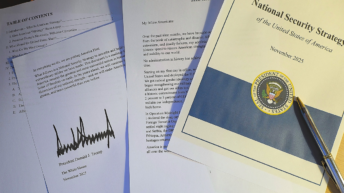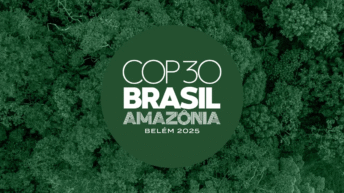
The Yamuna River flows through India’s history like a thread through a tapestry, weaving tales of ancient cities, divine legends, and human resilience. From the snow-capped peaks of Yamunotri to its confluence with the Ganga, it has sustained civilizations Indraprastha, the Pandavas’ fabled capital, thrived on its banks, and Krishna’s Vrindavan lilts still echo in its lore. Yet, today, the Yamuna is a paradox: revered as a goddess, but reduced to a glorified drain in Delhi, its waters frothy with toxins and its ecosystem gasping for breath. As the nation watches, the question looms: can we reclaim this lifeline, or will it remain a symbol of environmental neglect?
The Yamuna’s plight is no secret. In Delhi, a mere 22-kilometer stretch accounts for 80% of its pollution, despite amounting to less than 2% of its 1,376-kilometer length. Untreated sewage (327 crore liters daily, of which only 276 crore liters are treated) pours into its waters, alongside industrial effluents laden with heavy metals like lead and zinc. The Delhi Pollution Control Board’s February 2025 data paints a grim picture: dissolved oxygen levels drop below 5 mg/L downstream of Wazirabad, unfit for fish, while faecal coliform soars beyond 2,500 MPN/100ml, far exceeding safe limits. This is not a river; it’s an alarm call . Yet, amidst this despair, flickers of hope emerge from dialogue and determination.
The Roundtable Reflection
On April 8, 2025, the Vivekananda International Foundation (VIF), in collaboration with the Draupadi Dream Trust, hosted a roundtable titled “Significance of Sri Yamuna in the Culture & History of Bharat and Indraprastha—the World’s Longest Surviving Capital.” Experts like Professor Rajiv Sinha (IIT Kanpur), Shehzad Poonawalla (BJP Spokesperson), Dr. Md Hafizur Rahaman (IIT Delhi), and Deepanshu Aggarwal (Advisor to Delhi Minister Parvesh Sahib Singh) converged to dissect the river’s legacy and its modern crisis. The discussion underscored the Yamuna’s cultural importance, its role in shaping Bharat’s identity while spotlighting urgent solutions: from treating pollution hotspots like the Najafgarh drain to leveraging technology for ecological revival. It was a poignant reminder that heritage and health must go hand in hand.
Voices of Authority
The Ministry of Environment, Forest and Climate Change (MoEFCC) envisions the Yamuna’s revival as part of a broader ecological mandate. It advocates for biodiversity parks like the 457-acre Yamuna Biodiversity Park and stricter industrial discharge norms, aligning with India’s net-zero goals by 2070. The Ministry of Jal Shakti, tasked with water resource management, drives the “Yamuna Master Plan” (February 2025), a scientific blueprint for carrying out waste removal, drain treatment, and sewage infrastructure upgrades. It draws inspiration from Gujarat’s Sabarmati riverfront, aiming for a sustainably clean, rejuvenated free-flowing Yamuna within three years. Meanwhile, the Delhi Jal Board (DJB), under pressure since the BJP’s 2025 Delhi election victory, focuses on reducing untreated sewage discharge. Its 100-day plan (February 2025) includes desilting drains and boosting treatment capacity, though it admits that restoring freshwater flow remains a conundrum. Delhi takes water but returns sewage.
These visions, however ambitious, clash with reality. The MoEFCC’s call for ecological studies has not been implemented; Jal Shakti’s plans hinge on inter-state cooperation (e.g., Haryana’s Hathnikund Barrage releases), and the DJB’s 37 sewage treatment plants struggle with outdated technology, 75% fail to meet current standards. Coordination falters, and the river pays the price.
India’s River Ecosystem: A Fragile Web
The Yamuna’s story mirrors a national crisis. India’s rivers: Ganga, Godavari, Narmada, and others are lifelines for 1.4 billion people, supporting agriculture, hydropower, and Inspiring spirituality. Yet, they face a relentless assault: 70% of surface water is polluted (CPCB, 2023), with urban stretches like the Yamuna in Delhi or the Musi in Hyderabad bearing the brunt. Untreated sewage (38,000 million liters daily nationwide), industrial runoff, and encroachments strangle ecosystems, while climate change increases and multiplies floods and droughts. The Ganga, despite the Rs 20,000 crore spent under Namami Gange, still battles coliform spikes; the Yamuna’s “dead” Delhi stretch lacks oxygen for aquatic life. This isn’t just about rivers, it’s about food security, public health, and cultural identity. India’s riverine web is fraying, and the Yamuna’s its loudest cry for help.
The Path Ahead: Action Over Aspiration
Reviving the Yamuna and India’s rivers demands more than promises. First, we need accountability: upgrade sewage treatment with modern disinfection (UV, ozonation) and enforce zero-liquid discharge for industries, with youth-led audits to ensure compliance. Second, restore natural flow: revisit the 1994 Yamuna water-sharing MoU to guarantee an environmentally adequate flow from Haryana, not just evaporation-prone trickles. Third, embrace ecological solutions: scale up wetlands and biodiversity parks, mandate rainwater harvesting (as NGT ordered in 2021), and desilt riverbeds choked with legacy sludge. Fourth, mobilise communities—NSS, NCC, and NYKS can lead cleanups, and festivals like Yamuna Jayanti should double as conservation drives. Finally, integrate efforts: a unified authority, as proposed by the Delhi government in March 2025, must bridge relevant ministries, states, and concerned agencies.
The Yamuna is more than a river, it’s a test of our will. India’s cultural renaissance, from Telangana’s megaliths to Dwarka’s underwater archaeological site, shines bright, but it dims if our rivers die. Let’s ignite minds, 10 million young ones, as the Igniting Minds movement aims, to demand and deliver a clean Yamuna. A healthier river means a healthier nation. The time to act is now, lest we bequeath our children a legacy of loss.






Add comment